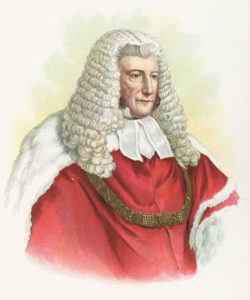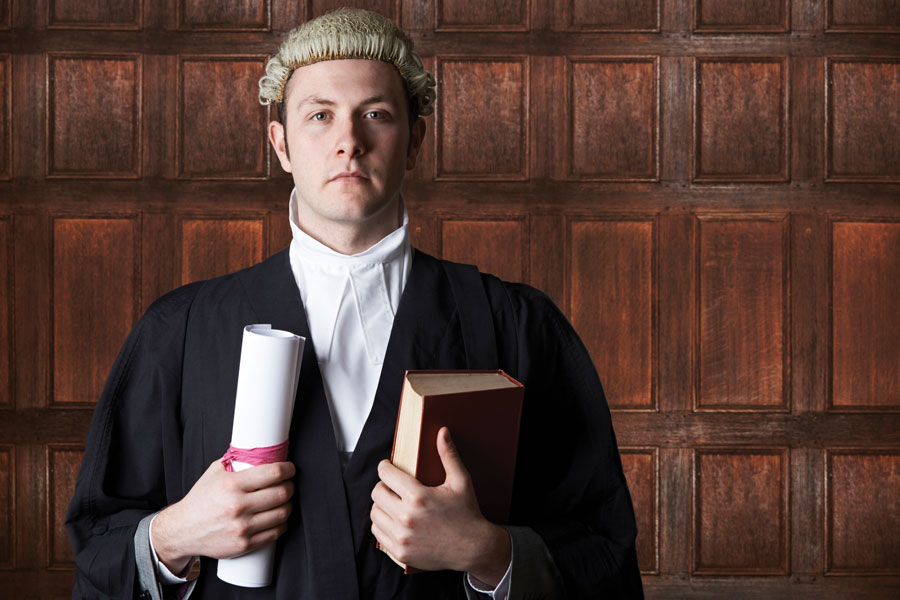There is an old English expression, “old habits die hard”, which refers to the fact that it is often very difficult to change traditional customs and practices. This has certainly been the case in relation to the court dress that judges and lawyers wear in common law jurisdictions. This column explores the practices concerning court dress in common law jurisdictions and also in mainland China.
History of wigs and robes in common law jurisdictions

The practice of wearing wigs and robes in England dates back to the 17th century, when the wearing of wigs by wealthy people in society became fashionable, during the reign of King Charles II. The fashion originated in France during the reign of King Louis XIV, who is said to have worn wigs in order to hide his baldness. The English word “wig” is a short form of the word “periwig” (which derives from the French word “perruque”) and appears in the English word “bigwig”, which is used informally to refer to an important person.
The importance of using dress to distinguish judges and lawyers from other members of society was recognised in England as early as 1635, when a royal decree was passed regulating the dress worn by judges and requiring them to wear black robes on normal occasions, and red robes for special ceremonial events and criminal cases.
Barristers soon “followed suit” by adopting the practice of wearing wigs and black robes in court. Even within the profession of barristers, different dress is worn depending on their seniority. Senior barristers who have been appointed Queen’s Counsel wear a silk robe, which is why such barristers are said to have “taken silk”, and are often referred to informally as silks (for a discussion about the different names given to lawyers, see China Business Law Journal volume 1 issue 6: Terms to describe lawyers).
The current practice in common law jurisdictions
The practice of wearing wigs by wealthy people in society fell out of fashion in the 18th century. However, judges and lawyers continued to wear wigs in court. That practice has survived until today, although courts in some common law jurisdictions have decided to dispense with the wearing of wigs and there is an ongoing debate about whether they should be retained in other common law jurisdictions.
In England, the rules governing the wearing of wigs and robes by judges and lawyers have traditionally been very complex, and have imposed requirements that differ from court to court, and also from season to season. In 2007, the Lord Chief Justice of England and Wales (who is the head of the judiciary of England and Wales) decided that judges would no longer wear wigs in civil cases, but would continue to wear wigs in criminal cases. In 2008, following a survey of the profession, the Bar Council (the body that regulates barristers) decided that barristers should continue to wear their existing wigs and robes in both civil and criminal cases.
Interestingly, the justices on the highest court in the UK – the Supreme Court of the United Kingdom (previously the Judicial Committee of the House of Lords) – have never worn wigs or robes for court appearances and only wear robes for ceremonial occasions.
In Australia, different practices are adopted by courts in different states and territories. In some jurisdictions, such as Western Australia, wigs have been abolished in both civil and criminal cases. In Victoria, by contrast, wigs have been abolished in civil cases but not in criminal cases. The decision of the Chief Justice of Victoria in 2016 to dispense with wigs in the common law division of the Supreme Court of Victoria proved controversial, as it was not initially clear whether the decision just applied to judges or whether it applied to both judges and barristers. After a Supreme Court judge reprimanded five barristers who appeared before him in a civil case wearing wigs, the court issued a notice confirming that the decision applied also to barristers.
In other common law jurisdictions in the Indo-Pacific region, such as Sri Lanka, Malaysia and the Hong Kong Special Administrative Region, judges and barristers follow the English traditions. Wigs, however, have been discarded by judges in Malaysia and India.
By contrast, the US departed from the English traditions in the middle of the 19th century. The rules differ from jurisdiction to jurisdiction. Today, most judges wear a plain black robe, including the justices who sit on the Supreme Court. In most cases, lawyers wear normal business dress.

You must be a
subscribersubscribersubscribersubscriber
to read this content, please
subscribesubscribesubscribesubscribe
today.
For group subscribers, please click here to access.
Interested in group subscription? Please contact us.
你需要登录去解锁本文内容。欢迎注册账号。如果想阅读月刊所有文章,欢迎成为我们的订阅会员成为我们的订阅会员。

Andrew Godwin
A former partner of Linklaters Shanghai, Andrew Godwin teaches law at Melbourne Law School in Australia, where he is an associate director of its Asian Law Centre. Andrew’s new book is a compilation of China Business Law Journal’s popular Lexicon series, entitled China Lexicon: Defining and translating legal terms. The book is published by Vantage Asia and available at law.asia.


















